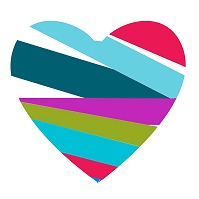In The 411 on Sexual Orientation, we talked about the different sexual orientations that there are out there. Today, we’re going to talk about gender identity.
This is a little more difficult for people to wrap their heads around. I personally think this is because 1) it doesn’t always involve our sex lives, and, 2) it is a newer concept. I’m generally happy to answer questions, but I find the bulk of the questions on gender identity coming from people who think I am Google or who just don’t know how to evaluate sources.
It is never okay to ask someone to explain their gender identity to you on the regular. This is a microaggression and annoying as all get out. It also really isn’t your business. You have no right to know what genitalia people possess, either that they were born with or acquired later in life.
Gender binary: this is the idea that we are all either males or females as (usually) designated at birth – and it is a social construct, especially with many ancient cultures having had multiple gender identities (third gender, two-spirit in some Native American communities, etc)
Agender: someone who does not feel as though they fit into any part of the gender binary or into additional gender terms below; without gender
Androgynous: someone who expresses both stereotypical masculine and feminine gender traits; can be used to describe people like Ruby Rose
Bigender: someone who traverses both traditional gender binaries; this is similar but different than genderqueer/genderfluid
Genderqueer/genderfluid: this is similar to the above, but really allows the person to identify how they feel each day and express that in whatever fashion they choose
Feminine/masculine presenting: this is how a person may present on a given day and can be applied to just about every gender identity; this is more about gender expression
Gender expression: this is how someone shows their gender
Passing: this term usually refers to how someone who is genderfluid/genderqueer/transgender appears; this may not be done out of choice, either; think someone who may be trans* in North Carolina having to look a certain way in order to utilize the bathroom due to HB2
Stealth: this term is usually used to refer to someone who is transgender but is perceived by others as cisgender
Transgender: someone who does not identify with the biological sex assigned to them at birth; many trans* people go through transitioning to another gender identity, but some do not – and they are just as valid as those who do
Trans/Trans*: this is a term that can be used in place of transgender because it can be more inclusive; there is some debate over whether or not having the asterisk is inclusive currently, but that originated from library search terms – trans* would give you results including transsexual, transgender, etc
Femme: someone who identifies as being more feminine
Cisgender: the gender identity you were given at birth lines up with how you feel about yourself today
Did I miss any gender identities? Add them in the comments! Please note that sexual orientation was discussed in a separate post.













